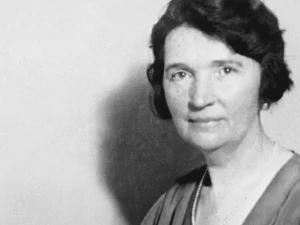In the realm of innovation and business strategy, one name stands out as a true game-changer: Clayton Christensen. The renowned Harvard Business School professor introduced the world to the concept of “disruptive innovation,” a term that has reshaped the way we view progress and success in today’s dynamic markets.
The Genesis of Disruptive Innovation
Clayton Christensen’s groundbreaking theory on disruptive innovation emerged from his observations of the technological landscape in the 1990s. He noticed that many successful companies with excellent products and services were failing to sustain their success in the face of emerging competitors.
Traditionally, companies focused on incremental improvements to satisfy existing customers’ needs, a strategy often referred to as “sustaining innovation.” However, Christensen identified a different breed of innovation that was changing the game entirely – disruptive innovation.
The Essence of Disruptive Innovation
Disruptive innovation challenges the status quo by creating simpler, more affordable, and accessible solutions that initially serve a niche market or a lower segment of the existing market. It’s like David taking on Goliath, where small, innovative startups disrupt established giants and redefine entire industries.
The key to disruptive innovation lies in its appeal to customers who were previously overlooked or underserved by the existing market leaders. As these new solutions improve and gain traction, they eventually move upmarket, displacing established players and changing the competitive landscape.
Kodak vs. Digital Photography: A Classic Disruptive Tale
A classic example of disruptive innovation is the downfall of Kodak, the once-mighty photography giant. While Kodak was busy perfecting film cameras and catering to its loyal customer base, digital photography quietly entered the scene.
Initially, digital cameras were low in quality and resolution, attracting only a small group of amateur photographers. Kodak, considering the digital technology inferior, dismissed its potential and continued focusing on film-based products.
However, the quality of digital photography rapidly improved, and it eventually disrupted the entire photography industry. Kodak’s failure to recognize the disruptive potential of digital cameras resulted in its eventual decline, while digital photography became the new norm, revolutionizing how we capture and share moments.
Embracing Disruption for Survival
The concept of disruptive innovation is a wakeup call for businesses across all industries. Ignoring the emergence of disruptive technologies and trends is a recipe for failure. To thrive in this ever-evolving landscape, companies must embrace disruption as an opportunity for growth rather than a threat.
Successful companies recognize the potential of disruptive innovation and invest in exploring new markets, experimenting with novel technologies, and challenging their own business models. They adapt quickly to changing circumstances and leverage their existing strengths to stay competitive.
The Pitfalls of Ignoring Disruption
History is rife with cautionary tales of companies that failed to adapt to disruptive innovation. Blockbuster, once the leading video rental chain, famously underestimated the potential of streaming services like Netflix. Instead of embracing the digital shift, Blockbuster clung to its brick-and-mortar stores, ultimately leading to its demise.
The fate of Blockbuster serves as a stark reminder that no company, regardless of its size or previous success, is immune to the forces of disruptive innovation. Ignoring emerging technologies and trends can be fatal in today’s fast-paced business landscape.
The Ongoing Legacy of Clayton Christensen
Clayton Christensen’s theory of disruptive innovation has left an indelible mark on the business world. His work has not only shaped strategic decision-making for companies but has also become an integral part of business education worldwide.
His influential book, “The Innovator’s Dilemma,” published in 1997, continues to be a must-read for aspiring entrepreneurs, executives, and innovators alike. It presents a roadmap for navigating the complexities of disruptive innovation and understanding how established companies can avoid the pitfalls of complacency.
In Conclusion
Clayton Christensen’s theory of disruptive innovation has transformed how we perceive progress, competition, and success. It serves as a reminder that no matter how successful a company may be today, the landscape can change rapidly with the emergence of disruptive technologies and ideas.
Embracing disruptive innovation is not just about survival; it’s about seizing opportunities to lead and shape the future of industries. Companies that can navigate the waves of disruption with agility, adaptability, and a willingness to embrace change are the ones that will thrive in this ever-changing world.
So, as the business landscape continues to evolve, will you stand as an agent of change or risk being disrupted? The choice is yours, and the legacy of Clayton Christensen reminds us that in embracing disruptive innovation, we open doors to limitless possibilities.







































